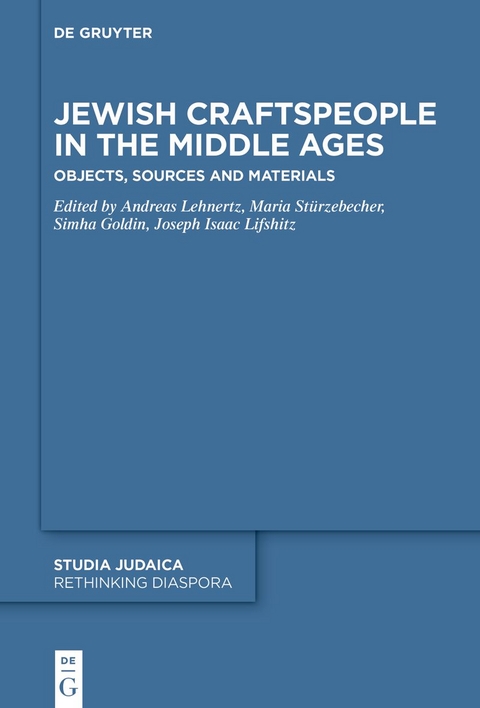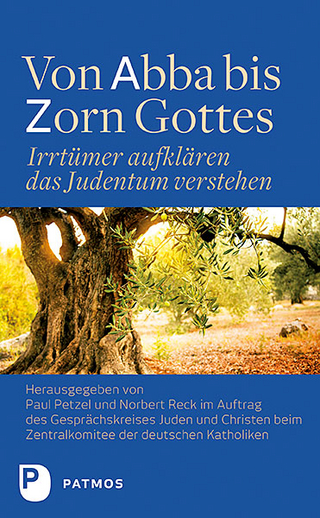
Jewish Craftspeople in the Middle Ages
Objects, Sources and Materials
Seiten
2025
De Gruyter (Verlag)
978-3-11-078798-6 (ISBN)
De Gruyter (Verlag)
978-3-11-078798-6 (ISBN)
- Noch nicht erschienen (ca. August 2025)
- Versandkostenfrei
- Auch auf Rechnung
- Artikel merken
The series focuses on the evolution of Jewish language, literature, communal life and religious ideology outside of the Land of Israel and in relation to it. The approach is inter-disciplinary with an emphasis on mutual influences between Jews and their non-Jewish environment. The series welcomes studies that span different periods and a variety of geographical areas.
The significant participation of Jews in medieval European daily life culture and economy is common knowledge in modern Jewish Studies. We know that Jews used the same objects as Christians did. Scholars therefore are speaking of the shared or entangled culture of both groups. But in general it is assumed that most of these objects were made by Christian craftspeople, organized in guilds. However, Jewish craftspeople existed as well and are testified by manifold different sources. Yet, this field to date has not been studied adequately. Sources providing evidence of medieval Jewish craftspeople are rather scarce at first glance, especially in Northern Europe. In the Mediterranean, most regions with Jewish populations have a much broader base of sources. We can find Jews in medieval Europe working as turners, dyers, window makers, weavers, goldsmiths, armorers, dicers, belt makers, glaziers, playing card makers, bricklayers, tailors, watchmakers and mouse trap makers – to mention only a few. A number of questions arise from these references, for example regarding the most common professions, the customers or the relationship with Christian craftspeople. In order to answer these questions, an interdisciplinary approach is necessary.
The significant participation of Jews in medieval European daily life culture and economy is common knowledge in modern Jewish Studies. We know that Jews used the same objects as Christians did. Scholars therefore are speaking of the shared or entangled culture of both groups. But in general it is assumed that most of these objects were made by Christian craftspeople, organized in guilds. However, Jewish craftspeople existed as well and are testified by manifold different sources. Yet, this field to date has not been studied adequately. Sources providing evidence of medieval Jewish craftspeople are rather scarce at first glance, especially in Northern Europe. In the Mediterranean, most regions with Jewish populations have a much broader base of sources. We can find Jews in medieval Europe working as turners, dyers, window makers, weavers, goldsmiths, armorers, dicers, belt makers, glaziers, playing card makers, bricklayers, tailors, watchmakers and mouse trap makers – to mention only a few. A number of questions arise from these references, for example regarding the most common professions, the customers or the relationship with Christian craftspeople. In order to answer these questions, an interdisciplinary approach is necessary.
lt;p>Simha Goldin, Tel Aviv, Andreas Lehnertz, Jerusalem, Maria Stürzebecher, Erfurt, Joseph Isaac Lifshitz, Jerusalem.
| Erscheint lt. Verlag | 13.8.2025 |
|---|---|
| Reihe/Serie | Rethinking Diaspora ; 5 |
| Zusatzinfo | 25 b/w and 25 col. ill. |
| Verlagsort | Berlin/Boston |
| Sprache | englisch |
| Maße | 155 x 230 mm |
| Themenwelt | Geisteswissenschaften ► Religion / Theologie ► Judentum |
| Schlagworte | crafts and craftspeople • Handwerk • Jewish daily Llfe • Jewish Medieval History • Jüdische Geschichte • Mittelalter • objects • Zünfte |
| ISBN-10 | 3-11-078798-9 / 3110787989 |
| ISBN-13 | 978-3-11-078798-6 / 9783110787986 |
| Zustand | Neuware |
| Haben Sie eine Frage zum Produkt? |
Mehr entdecken
aus dem Bereich
aus dem Bereich
ein Zerrbild mit fatalen Folgen
Buch | Softcover (2023)
Claudius (Verlag)
CHF 34,90
Irrtümer aufklären - das Judentum verstehen
Buch | Softcover (2024)
Patmos Verlag
CHF 15,90


